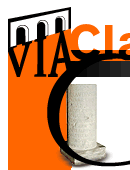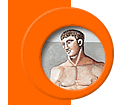|

 ambruzzi
narrates about the joy of the Feltrino population for the regained
peace and about the long lasting celebrations. A public ordinance
declared that the celebration of the 15th June should take place
every year. It consisted of a parade including any rank of population
and of a horse race competing for a reward of 15 golden ducats :
"Et in dicta die ponatur unum bravium ducatorum quindecim auri as
quod curratur equester" The town is divided into four boroughs Duomo,
Port'Oria, Castello
and Santo Stefano. Each borough features
its own colours and symbols and compete for the banner , which is
painted every year by a famous international artist. Four races
take place: relay race, tug-of-war, archery and final horse race ambruzzi
narrates about the joy of the Feltrino population for the regained
peace and about the long lasting celebrations. A public ordinance
declared that the celebration of the 15th June should take place
every year. It consisted of a parade including any rank of population
and of a horse race competing for a reward of 15 golden ducats :
"Et in dicta die ponatur unum bravium ducatorum quindecim auri as
quod curratur equester" The town is divided into four boroughs Duomo,
Port'Oria, Castello
and Santo Stefano. Each borough features
its own colours and symbols and compete for the banner , which is
painted every year by a famous international artist. Four races
take place: relay race, tug-of-war, archery and final horse race
Port'Oria The name originates from the eastern town gate
having underneath the Borgo Ruga: the borough includes the small
villages of Anzł, Canal, Cellarda, Nemeggio, Pont, Villapaiera,
Sanzan. The banner indicates a Bohemian double-headed eagle on a
golden background.
|
 |
 uomo
The borough covers the area leading to Porta Pusterla, the
borgo around the cathedral, the small villages of Mugnai, Tomo and
Villaga. The banner indicates an eight-pointed golden star with
a basis of three golden stripes on a blue background. uomo
The borough covers the area leading to Porta Pusterla, the
borgo around the cathedral, the small villages of Mugnai, Tomo and
Villaga. The banner indicates an eight-pointed golden star with
a basis of three golden stripes on a blue background.
Castello The borough covers the Alboino's
castle and the north-eastern area including the small villages of
Arson, Cart, Lasen, Umin, Grum, Vellai, Vignui, Villabruna, Zermen..
The banner indicates a golden lion on a light blue background. Santo
Stefano The borough includes an area located north-east of
the town and the small villages of Foen, Lamen, Pren. The banner
indicates a golden hunting horn on a red background. The small villages
belonging to the different boroughs originate from the ancient castles
lying in the area called le Feltrie.

|








![]() Historical
Evocations
Historical
Evocations ![]() Historical
Evocations
Historical
Evocations 
